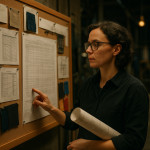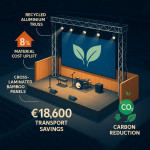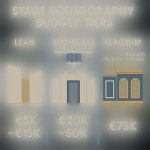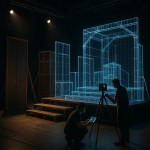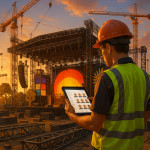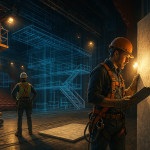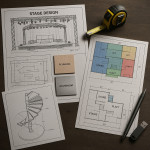Adding augmented reality to stage design: workflow bridges studio-crew
Augmented reality (AR) is no longer a futuristic gimmick. When integrated into stage design, it becomes a powerful bridge between creative studios and on-site crews, reducing revisions, accelerating builds and stunning audiences. This guide walks you through a proven workflow, the tools, the budget checkpoints and the collaboration rituals that make AR-driven scenography a reliable choice for producers.
Why augmented reality is a game-changer for stage scenography
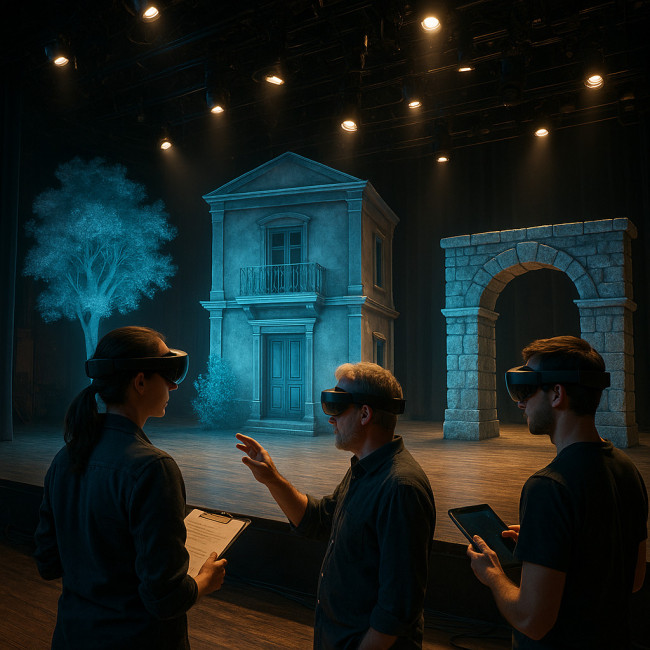
Traditional stage sets rely on physical prototypes or 3D renders viewed on a laptop. Adding augmented reality to stage design replaces those abstractions with life-size, interactive previews. Directors, lighting engineers and performers see props and backdrops exactly where they will appear, at the correct scale, before a single plank is cut.
- Speed: Iterate layouts in minutes, not days.
- Clarity: Crew members visualize rigging points and sightlines on stage.
- Cost control: Early clash detection cuts re-fabrication costs by up to 20 %.
- Marketing edge: AR teasers attract sponsors and ticket buyers on social media.
Studios already experimenting with digital twin scans find that AR accelerates the jump from virtual to physical, making it a natural next step.
A step-by-step workflow that aligns studio and on-site crew
1. Capture venue data
Begin by scanning the empty venue with LiDAR or photogrammetry. Export an OBJ or FBX file that locks in dimensions, power locations and audience viewpoints.
2. Build the AR-ready model
Import the scan into your preferred 3D software. Designers add set pieces, dynamic backdrops and prop markers while respecting weight loads and rigging zones.
3. Optimize assets for real-time rendering
Real-time engines such as Unreal or Unity require low-poly meshes and PBR textures. Keep material count under 100 and ensure each texture is below 2048 px for mobile performance.
4. Deploy to AR devices
Use ARKit on iPad Pro or Microsoft HoloLens for hands-free mapping. Load the package via a simple QR code to avoid cable chaos during rehearsals.
5. On-site validation
- Mark the physical stage with alignment anchors.
- Run a calibration pass so the digital scene locks to real-world coordinates.
- Invite department leads to walk the stage, annotate collision points and sign off directly in the app.
6. Iterate and freeze
Because feedback is embedded in the AR model, designers back in the studio receive updates instantly. Once the final pass is approved, export precision cut files for CNC and lighting cue sheets for the console.
Tool stack overview
| Workflow phase | Recommended software | Hardware | Key output |
|---|---|---|---|
| Scanning | Polycam, RealityCapture | iPhone 15 Pro, DSLR | OBJ, FBX |
| Design | Blender, 3ds Max | Workstation GPU ≥ 8 GB VRAM | .blend, .max |
| Real-time build | Unreal Engine, Unity | NVIDIA RTX 3060+ | .apk, .app |
| Deployment | ARKit, MRTK | iPad Pro, HoloLens 2 | Scene bundle |
| Review & sign-off | Trello, Miro AR | Any tablet | Task checklist |
For budget planning, compare these tools with benchmarks in decoded stage-scenography budgets to avoid nasty surprises.
Collaboration rituals that keep everyone in sync
Daily sync in mixed reality
Instead of a 2D call sheet, crew leads join a quick stand-up wearing AR headsets. The production manager toggles layers—set, lighting, sound—so each team sees only what matters.
Version control for creative teams
Use Git-based repositories or Perforce for large files. Set naming conventions such as sceneName_v3_reviewed to avoid conflicting builds.
On-the-spot annotation
Technicians leave voice notes pinned to virtual objects. Designers receive push notifications, ensuring no feedback slips through.
Remote producer approvals
Send a simple link that lets stakeholders place the stage design in their living room via WebAR. They experience the vision without flying on-site, cutting travel emissions and costs.
Studios that already leverage VR pre-visualization pipelines will find most practices transfer seamlessly to AR.
Budget and timeline checkpoints
- Pre-production (Weeks 1-2): Scan venue, build base model. 10 % of total spend.
- Design & optimization (Weeks 3-6): Iterate assets, test on devices. 35 %.
- On-site AR rehearsals (Weeks 7-8): Hardware rental, calibration. 25 %.
- Fabrication & installation (Weeks 9-11): Use AR as build guide. 25 %.
- Contingency: Reserve 5 % for emergency re-printing or hardware swaps.
Need eco-smart material options? Pair AR planning with sustainable stage materials to meet green KPIs without stretching the budget.
Common pitfalls and quick fixes
- Poor tracking in low-light venues: Add temporary LED markers during calibration.
- Model drift during long rehearsals: Re-anchor every 30 minutes to stabilize coordinates.
- Texture overload on mobile devices: Compress textures to 1K and use hardware-based occlusion.
- Crew resistance to new tech: Offer a 30-minute hands-on demo; adoption rates jump when they see time savings.
- Last-minute script changes: Keep a rapid-edit station backstage with hot-swap builds compiled and ready.
Real-world example: immersive theatre pop-up
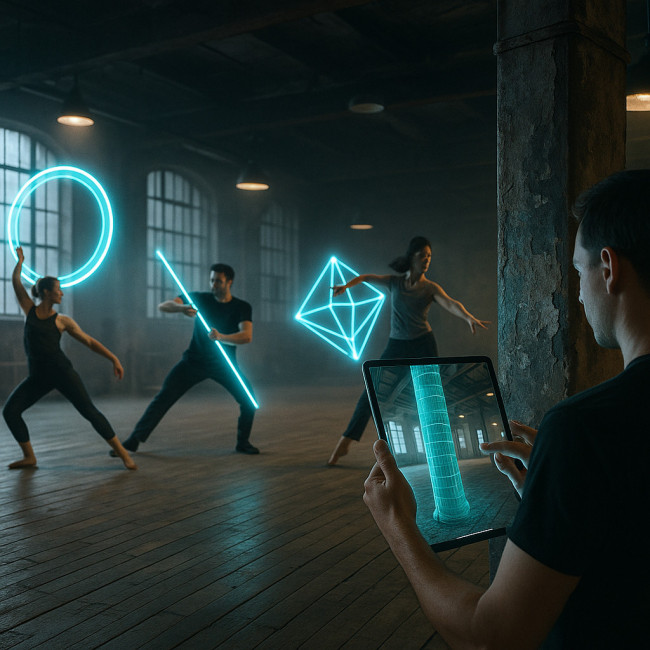
A regional company used AR to stage a 360° dance piece inside an old warehouse. The studio sent its lead designer on-site with two iPad Pros, mapping pillars and exits in under an hour. Dancers rehearsed with holographic props, while the lighting crew pre-programmed cues early. The result: only one overnight build shift instead of the usual three, saving €12,000 in overtime.
Curious producers can browse similar spatial experts on the Artfolio spatial-designers roster and book talent already fluent in AR pipelines.
Quick knowledge check
FAQ
- Do performers need to wear headsets during live shows?
- No. Headsets are for rehearsals and alignment. Once the physical set is built, the audience sees real scenery. AR helps the crew, not the crowd.
- Can small theatres afford adding augmented reality to stage design?
- Yes. Entry-level iPads and a free real-time engine cover the basics. Many venues amortize gear over multiple productions to keep costs below 5 % of annual set budgets.
- What file formats work best for cross-software handovers?
- Use FBX for geometry and glTF for textured assets. Both keep hierarchy data intact across Blender, Unreal and Unity pipelines.
- How do I keep stage lighting from breaking AR tracking?
- Balance exposure: avoid pure blackouts during calibration and add reflective markers on the floor for frame re-alignment.
- Where can I learn more about AR-ready set documentation?
- Check workflows in stage design documentation packs to complement your AR files.
Bring AR into your next production
Adding augmented reality to stage design turns planning headaches into interactive problem-solving. Equip your studio-crew duo with the workflow above, and expect faster approvals, tighter budgets and jaw-dropping reveals. Ready to lead the next wave of immersive shows? Start by mapping your venue today and test a free AR preview on a tablet. Your audience—and your bottom line—will thank you.
